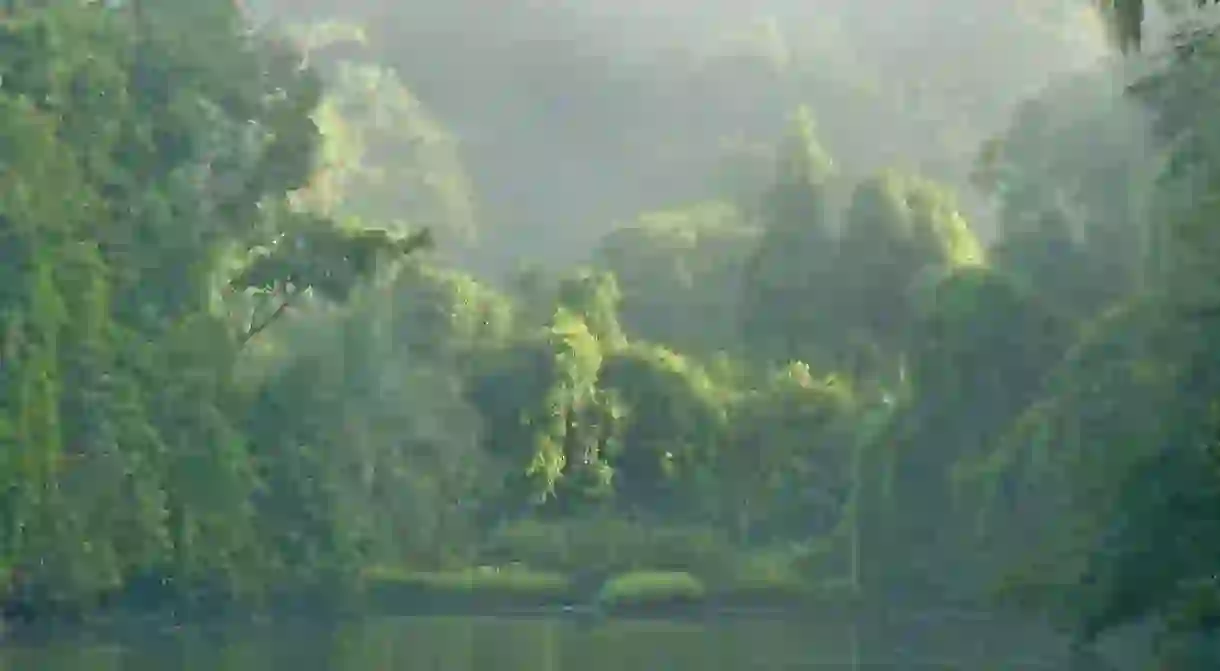Visit These Underrated National Parks in Costa Rica

Nearly 25 percent of Costa Rica is protected as a national park, reserve or refuge. While national parks like Manuel Antonio, Arenal, Poás, Irazú and Tortuguero receive the majority of visitors, there are others that often get overlooked – meaning fewer people and more space for those who make the extra effort. Read on to find out where these underrated national parks are.
If you’d like to experience Costa Rica’s national parks with a local guide at your side, join Culture Trip’s specially curated nine-day Costa Rica tour for a hassle-free trip shared with like-minded travelers.
Piedras Blancas National Park
Forest, Natural Feature, Park

Piedras Blancas National Park was once part of the world-famous Corcovado National Park. It is to the west of the Golfo Dulce Forest Reserve and to the east of the Golfito National Wildlife Refuge in the southern Pacific region of Costa Rica. It’s an incredibly biodiverse and heavily protected region of the country. Surprisingly though, it’s still relatively unexplored, especially by international visitors. Within this dense tropical rainforest park, there are hidden waterfalls, dreamy beaches and even lively reefs off the coast.
Barra Honda National Park
Hiking Trail, Natural Feature, Park

Barra Honda National Park is one of the most unique in Costa Rica and one that many people traveling to and staying in Guanacaste overlook. What makes this park so distinct is its intricate limestone cave system. Until the late 1960s, it was believed that Barra Honda was a volcano. Only around half of the 42 caverns have been explored. The limestone caverns are spectacular and well preserved in part because of their inaccessibility. One cave, in particular, is home to a colony of an estimated 5,000 bats. A guided hiking and cave tour is definitely the way to go about exploring this incredible geological attraction.
La Amistad National Park
Natural Feature, Park

Cocos Island National Park
Natural Feature, Park

Barbilla National Park
Forest, Natural Feature, Park

Barbilla National Park sits on the Caribbean slope and is predominantly a lowland rainforest. This is one of Costa Rica’s least visited parks. There may be as few as two dozen visitors a month. It’s also home to the second-largest indigenous tribe, the Cabécar, in the country. Barbilla National Park is pristine and teeming with wildlife, including the endangered jaguar, ocelot and tapir. The best way to experience this magical park is with an experienced and knowledgeable guide. The hiking trails are a bit rugged, and you will definitely see and learn more if you have someone who is an expert with you.
Juan Castro Blanco National Park
Forest, Natural Feature, Park

Juan Castro Blanco National Park is in the northern central lowlands and home to three volcanoes, thermal hot springs and a lush primary rainforest. It’s an excellent park for those who love hiking and birdwatching. Aside from the hiking trails, there are no other park services available here. While the Juan Castro Blanco National Park is easy to access, especially if you are coming from San José, it’s often overlooked by visitors who tend to visit the other more well-known parks in this part of the country. If you want to experience some of Costa Rica’s incredible biodiversity without hundreds of other visitors around you, this is your park.
Chirripó National Park
Forest, Hiking Trail, Natural Feature, Park

Chirripó National Park is home to the highest peak in Costa Rica. It’s a hotspot for adventurous hikers, but outside that select group, this national park doesn’t see nearly as many visitors as some of the more popular parks. It’s host to multiple ecosystems, including moorland, glacial lakes, cloud forests and premontane forests. The rewards of spending time in this extraordinary national park are great, as it’s famous for its variety of exotic birds and vast panoramic views.













